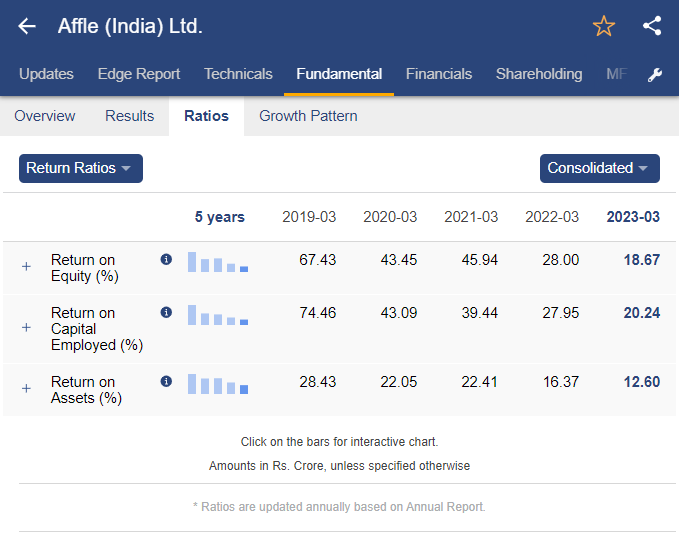20 Great Pieces Of Advice For Picking Ai Stock Trading
20 Great Pieces Of Advice For Picking Ai Stock Trading
Blog Article
Top 10 Tips For Starting Small And Gradually Scaling For Ai Stock Trading, From Penny To copyright
Begin small and gradually increase the size of your AI stock trades. This method is perfect for navigating high risk environments, such as the penny stocks market and copyright markets. This allows you to get experience, develop your models, and manage risks efficiently. Here are 10 top strategies for scaling AI stock trading slowly:
1. Start with a Clear Strategy and Plan
Before beginning trading, you must establish your objectives as well as your risk tolerance. Also, you should know the markets that you want to focus on (such as penny stocks or copyright). Begin with a small and manageable part of your portfolio.
Why? A well-defined strategy can help you keep your focus while limiting your emotional making.
2. Testing with paper Trading
Paper trading is an excellent way to get started. It lets you trade with real data without risking capital.
What's the reason? It allows you to to test your AI model and trading strategies without financial risk to discover any issues prior to scaling.
3. Select a low cost broker or Exchange
Tip: Choose an exchange or brokerage company that offers low-cost trading and also allows for fractional investments. This is particularly helpful for those who are starting out with a penny stock or copyright assets.
Examples of penny stocks include: TD Ameritrade, Webull, E*TRADE.
Examples of copyright: copyright copyright copyright
Why: Reducing commissions is important in less frequently.
4. Concentrate on a single Asset Class Initially
TIP: Concentrate your studies on a single asset class beginning with penny shares or copyright. This will reduce the level of complexity and allow you to focus.
Why is that by focussing your efforts on a specific market or asset, you will be able to lower the learning curve and gain knowledge before expanding into new markets.
5. Utilize Small Position Sizes
Tips: Limit your risk exposure by keeping your position sizes to a minimal percent of the overall value of your portfolio.
Why is this? Because it helps you reduce losses while also fine-tuning the accuracy of your AI model and understanding the market's dynamic.
6. Gradually increase the amount of capital you have as you increase your confidence
Tip: If you are always seeing positive results over some time you can gradually increase your trading capital in a controlled manner, only in the event that your system is showing reliable performance.
Why: Scaling your bets slowly will help you build confidence in both your trading strategy as well as the management of risk.
7. Concentrate on a simple AI Model first
Tip: Use simple machine learning models to predict the price of stocks or copyright (e.g. linear regression or decision trees) prior to moving to more sophisticated models such as neural networks or deep-learning models.
Reason: Simpler trading systems make it easier to maintain, optimize and understand when you first begin your journey.
8. Use Conservative Risk Management
Tip: Implement strict risk management guidelines including tight stop-loss orders, limit on the size of a position and a conservative use of leverage.
The reason: Using conservative risk management helps prevent large losses from happening early in your trading careers and also ensures the long-term viability of your approach when you expand.
9. Reinvesting Profits into the System
Tip: Reinvest any early profits back into the system, to improve it or expand operations (e.g. upgrading hardware or raising capital).
Why: Reinvesting profits helps to compound the gains over time, while improving the infrastructure needed for larger-scale operations.
10. Check your AI models often and improve them
Tips: Observe the performance of AI models continuously and improve them using more data, new algorithms, or improved feature engineering.
Why: By regularly optimizing your models, you'll be able to make sure that they are constantly evolving to adapt to changing market conditions. This can improve your predictive capability as you increase your capital.
Bonus: After having a solid foundation, think about diversifying.
Tip: After you've built a solid foundation, and your system has consistently been profitable, you might want to consider adding other asset classes.
What's the reason? By giving your system to make money from different market situations, diversification can help reduce the chance of being exposed to risk.
By starting small and scaling slowly, you give yourself time to learn how to adapt, grow, and establish solid foundations for trading that is essential for long-term success within the high-risk environments of the copyright and penny stocks. Follow the most popular best ai stocks url for more examples including copyright predictions, penny ai stocks, using ai to trade stocks, best stock analysis app, ai for trading, ai stock predictions, ai copyright trading, ai stock trading bot free, ai day trading, ai for trading stocks and more. 
Start Small And Scale Ai Stock Pickers To Increase Stock Picking As Well As Investment Predictions And.
Scaling AI stock pickers to predict stock prices and to invest in stocks is a smart method to lower risk and comprehend the complexities that lie behind AI-driven investment. This will allow you to develop an effective, sustainable and well-informed stock trading strategy and refine your models. Here are 10 great ways to scale AI stock pickers on the smallest scale.
1. Begin with a Focused, small portfolio
Tips - Begin by creating a small portfolio of shares that you are familiar with or have conducted thorough research.
The reason: A concentrated portfolio will allow you to gain confidence in AI models, stock selection and minimize the chance of huge losses. As you become more experienced it is possible to gradually add more stocks or diversify across sectors.
2. Use AI to Test a Single Strategy First
Tips - Begin by focusing your attention on a specific AI driven strategy, such as momentum or value investing. Then, you can expand into different strategies.
Why: This approach lets you know how your AI model works and fine-tune it for a particular type of stock picking. Then, you can expand the strategy with more confidence when you are sure that the model is functioning.
3. A small amount of capital is the most effective way to minimize your risk.
Start with a modest capital sum to limit risk and provide room for errors.
The reason: Choosing to start small reduces the potential loss while you improve the accuracy of your AI models. It's an opportunity to learn from experience without putting a lot of money on.
4. Paper Trading or Simulated Environments
TIP: Use simulated trading or paper trading in order to evaluate your AI stock picking strategies as well as AI before investing in real capital.
Why: Paper trading lets you experience real-world market conditions and financial risks. This allows you to refine your models and strategies that are based on real-time information and market movements without financial exposure.
5. Gradually increase the capital as you grow
Tip: Once you've gained confidence and can see steady results, gradually ramp your investment capital by increments.
How: Gradually increasing the capital allows you control the risk of scaling your AI strategy. If you scale up too fast before you've seen the results can expose you to unnecessary risk.
6. AI models to be monitored and continuously adjusted
Tips: Make sure you be aware of the AI stockpicker's performance frequently. Make adjustments based on the market, performance metrics and new information.
What's the reason? Markets evolve and AI models need to be continuously improved and updated. Regular monitoring can help identify underperformance and inefficiencies. This ensures that the model is scalable.
7. Build a Diversified universe of stocks gradually
Tip. Start with 10-20 stocks and expand the universe of stocks as you accumulate more data.
Why is that a smaller universe allows for better management and better control. Once you've confirmed the validity of your AI model is working then you can begin adding more stocks. This will increase diversification and decrease risk.
8. The focus should be on low cost, Low Frequency Trading at First
When you are ready to scale, concentrate on low cost trades with low frequency. Invest in stocks with lower transaction costs and fewer trades.
Why? Low-frequency and low-cost strategies let you focus on your long-term goals while avoiding the complexities of high-frequency trading. This lets you fine-tune the AI-based strategies you employ while keeping trading costs down.
9. Implement Risk Management Strategy Early
Tip: Incorporate risk management strategies such as stop losses, position sizings and diversifications at the start.
Why: Risk management is vital to safeguard your investment portfolio as you expand. To ensure your model is not taking on more risk that is acceptable even when scaling, having well-defined rules will allow you to determine them from the very beginning.
10. Learn by watching the performance and repeating.
Tips. Use feedback to iterate refine, improve, and enhance your AI stock-picking model. Make sure you learn what works and what doesn't make tiny tweaks and adjustments as time passes.
Why? AI models get better with time as they get more experience. Monitoring performance helps you continually refine models. This reduces mistakes, increases predictions and helps you develop a strategy based on insights derived from data.
Bonus Tip: Make use of AI to automatize Data Collection and Analysis
Tips: As you scale up make sure you automate processes for data collection and analysis. This will enable you to manage bigger datasets without feeling overwhelmed.
Why: As stock pickers scale, managing large data sets manually becomes impractical. AI can automate the processes so that you can have more time for strategy and higher-level decisions.
Conclusion
Beginning with a small amount and gradually expanding your investments, stock pickers and predictions with AI, you can effectively manage risk and refine your strategies. You can increase the risk of investing in markets while increasing your chances of success by keeping a steady and controlled expansion, continuously developing your models and maintaining good risk management practices. To scale AI-driven investment requires an approach based on data which changes as time passes. Have a look at the top she said for stocks ai for blog info including ai trade, ai stock, using ai to trade stocks, ai stock market, ai for stock market, best ai penny stocks, ai stock trading app, ai financial advisor, copyright ai, trade ai and more.